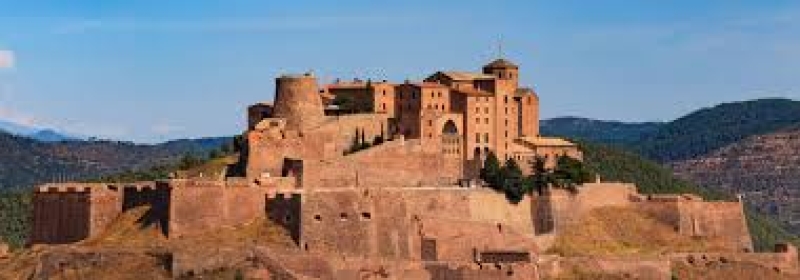- Inqilab Monch Seeks Home Adviser’s Exit |
- UN Calls for Calm in Bangladesh After Protest Leader’s Killing |
- DMP issues 7 traffic directives for Osman Hadi’s Janaza |
- Vested quarter fuelling chaos to impose new fascism: Fakhrul |
- Hadi’s namaz-e-janaza at 2:30pm Saturday |
Five things to know about Spain's Catalonia

Catalonia votes Sunday in a regional election with high stakes for its separatist movement.
Here are five things to know about the wealthy northeastern Spanish region which has significant autonomous powers and has been governed for the past decade by the separatists:
- Secession attempt -
Catalonia made international headlines when its regional government pushed ahead with an independence referendum on October 1, 2017 despite a ban by Spanish courts, reports BSS.
The regional parliament then unilaterally declared Catalonia's independence, prompting Spain's worst political crisis in decades. The central government dismissed the regional government and imposed direct rule from Madrid.
Catalonia's leaders were either arrested or fled abroad, as was the case with regional leader Carles Puigdemont, who has been living in exile in Belgiumever since.
Socialist Prime Minister Pedro Sanchez who took office the following year, has sought to defuse separatist tensions. His left-wing government holds onto power with the key support of Catalonia's pro-independence parties.
In exchange, they demanded an amnesty for separatists wanted over the 2017crisis, which should get final approval in the coming weeks, paving the way for Puigdemont's return to Spain.
- Separatists in power -
For over a decade, Catalonia has been governed by parties which back independence for the region.
In 2010, Artur Mas -- Catalonia's conservative nationalist leader at the time-- made a shift towards independence, mirroring a growing sentiment among thepopulation.
At the time, Spain was in the throes of a financial crisis that was fuellinganger over austerity measures.
He was succeeded in January 2016 by Puigdemont who went on to lead the failedsecession bid the following year.
Since then separatists parties have maintained a majority in Catalonia's 135-seat parliament. During the last elections in 2021, they won 74 seats.
But deep divisions within the pro-independence movement led Puigdemont'shardline JxCat to quit the ruling coalition in October 2022, leaving the moremoderate separatist ERC in power.
The separatist picture has been further complicated by the emergence inrecent months of a new far-right formation, Catalan Alliance, which is seenwinning 3.0 percent of the vote on Sunday.
- Autonomy -
Under Spain's highly decentralised system of power, Catalonia is one of thecountry's 17 regions with the greatest amount of autonomy.
Home to some eight million people, the region is responsible for health careand education, has its own police force -- the Mossos d'Esquadra -- andrecently obtained control over rail transportation.
As part of the agreement with separatist parties to return Sanchez to power,his government has promised "measures to enable" Catalonia's "fiscalautonomy".
Puigdemont's JxCat party had demanded Madrid hand over "100 percent of thetaxes" paid in the region.
- Economic engine -
Catalonia is Spain's second richest region, accounting for 19 percent of thecountry's gross domestic product. Formerly the most wealthy region, it wasovertaken by Madrid after the 2017 secession attempt.
Home to major firms such as fashion retailer Mango and mobile phone toweroperator Cellnext, Catalonia is by far Spain's biggest source of exports,accounting for 26.1 percent of the national total.
An industrial hub, its unemployment rate stands at 10.4 percent, comparedwith the national average of 12.3 percent.
- Language -
While Catalan and Spanish are both official languages, the majority ofeducation is provided in Catalan, which is also the language used by theregion's public administration.
According to the regional government, 29 percent of inhabitants speak Catalanas their mother tongue, while 86 percent had a good understanding of thelanguage.

